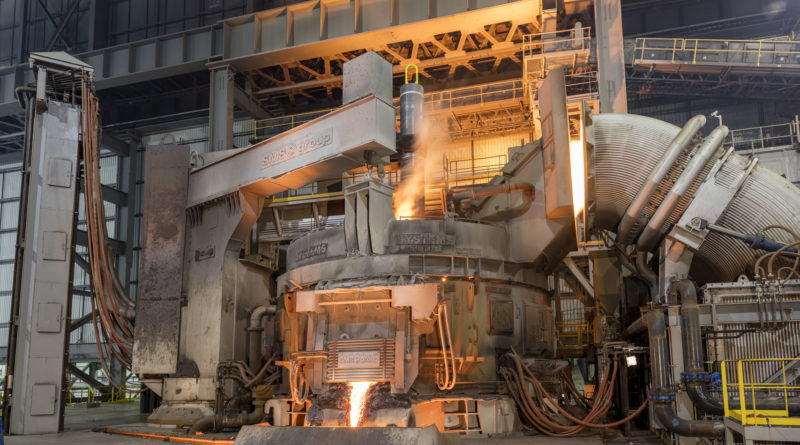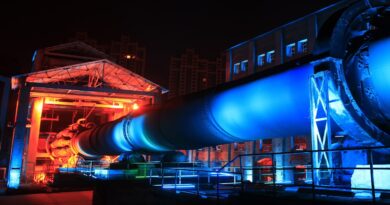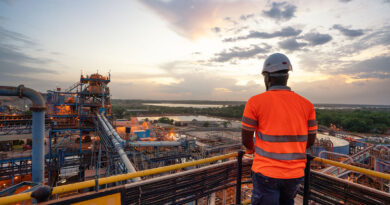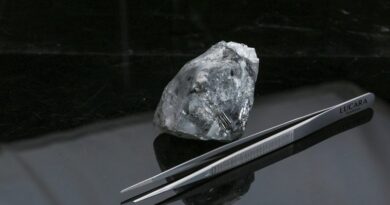ArcelorMittal South Africa records strongest profits in a decade
As anticipated in February 2021, both stronger sales volumes and the benefit of robust price-cost effects enabled ArcelorMittal South Africa to enjoy a strong start to 2021, recording a half yearly EBITDA of R3 218 million, its strongest in a decade.
Cash flow performance for the period was another highlight. Despite the R1 661 million investment in working capital (reflecting market factors), the Company generated free cash flow of R985 million, resulting in a net debt of R2 782 million against R3 702 million for the comparative period and R3 624 million at 31 December 2020.
This performance was remarkably achieved against the backdrop of one of the most challenging operating environments in the company’s long history, characterised by:
- two Covid-19 waves
- inclement weather events at the beginning of the year
- a highly inconsistent rail service necessitating frequent and costly operational stops
- tragic and painful safety incidents, and the particularly noteworthy efforts of the entire business in restoring the damaged plants and stabilising operations
- a successful long maintenance stop at the Newcastle Works’ blast furnace to address damage caused as a result of the hard lockdown and
- ramp-up challenges associated with restoring and accelerating production in the complex integrated steelmaking routes.
The recovery in the global steel environment observed since the second half of 2020, has accelerated in 2021. Activity levels in steel markets have continued to recover. Strong demand and low supply chain inventories (following significant destocking in prior periods) have combined to support a strong recovery in steel spreads (being the difference between steel prices and raw material costs).
Average international dollar steel prices increased by 79%. This contrasts to iron ore indices which increased by 101%.
Turning to South Africa and the regional economy, consensus GDP growth forecasts for South Africa are around 4,5% for 2021, which is positive for steel demand. Market inventory levels are increasing albeit at varying speeds for different products. By June 2021, ArcelorMittal South Africa’s monthly production levels and dispatches were largely balanced.
The Business Transformation Programme (BTP) contributed a further R1 001 million (H1 2020: R663 million) in improvements, adding to the R3,6 billion of improvements achieved since the programme started in the second half of 2018.
MARKETS
Global crude steel production increased to 1,0 billion tonnes by 30 June 2021 as economic stimulus packages continued to benefit the mining, manufacturing and infrastructural, while keeping supply chains under pressure. This is 122 million tonnes (or 14%) higher than comparative period levels.
China’s crude steel production increased by 11% to 560 million tonnes maintaining its market share of 56%.
Europe’s crude steel output increased by 19% to 100 million tonnes. North America was up by 16% year-on-year to 59 million tonnes. Turkey and Russia managed to increase their production by approximately 21% and 8% respectively while India rose by 31% to 58 million tonnes.
Africa’s crude steel output increased by 26% to 8 million tonnes due to higher production in South Africa and Egypt.
South Africa’s crude steel production increased by 39% to 2,5 million tonnes reflecting 2020’s hard economic lockdown in the region which was not necessary the case throughout the rest of the world.
Turning to South Africa, apparent steel consumption for the first half of 2021 increased by 9% to 2,2 million tonnes compared to the preceding six months (H2 2020). The improvement in steel demand is being driven by faster recovery in the mining, automotive and fabrication, construction and infrastructure sectors along with energy projects.
Total steel imports of primarily hot rolled coil, galvanised sheet and tinplate increased by 25% to 687 000 tonnes compared to the preceding six months (H2 2020) in response to the supply chain shortages in the local market.
This constituted some 31% of South Africa’s apparent steel consumption (H1 2020: 24%), which is likely to reduce during the remainder of the year as the supply chain normalises mainly due to domestic output which is recovering, the cancelation of steel exports incentives by China, and the imposition of imports duties by Russia.
The Company’s total sales volumes increase by 10% or 116 000 tonnes to 1,3 million tonnes compared to H1 2020, due to a 21% or 195 000 tonnes rise in domestic sales and a 39% or 79 000 tonne fall in mainly seaborne exports, as volumes were reallocated to Africa Overland markets.
OPERATIONAL
Excluding Saldanha Works, which through an orderly and commercial wind-down was placed under care and maintenance early in the second quarter of 2020, the Company’s average capacity utilisation increased from 39% in H1 2020 to 59% in H1 2021, and is currently at 85%.
Liquid steel production (including that from Saldanha Works) increased by 36% or 403 000 tonnes, from 1,1 million tonnes to 1,5 million tonnes during H1 2021.
With a crude steel production capacity of 6,4 million tonnes (including Saldanha Works) and an estimated full year apparent steel production (ASC) of 4,6 million tonnes (4,1 million tonnes excluding the products not manufactured in South Africa), the Company is well placed to fully service South Africa’s entire steel demand.
FINANCIAL RESULTS
ArcelorMittal South Africa reported a EBITDA profit of R3 218 million against a loss of R1 256 million in the previous period, while its operating profit increased from a loss of R1 528 million in H1 2020 to a profit of R2 945 million. The headline profit of R2 482 million recovered from a loss of R2 613 million, amounting to a 223 cents per share profit against 239 cents loss for the comparative period in 2020.
Revenue increased by 55% to R18 596 million due to a 10% rise in total steel sales volumes and a 42% rise in net realised steel sales prices.
The Company’s raw material basket (iron ore, coking coal, and scrap), representing 43% (H1 2020: 42%) of total cash cost, was 2% higher in rand terms, which is very pleasing given the 44% increase in the international raw material basket.
This reflects the work done in diversifying the sources of raw materials. Consumables and auxiliaries, which represented approximately 31% of cash cost per tonne (H1 2020: 31%) remained flat for the period. Electricity cost increased by 12% on a per tonne basis.
Fixed costs increased from R2 569 million (R2 238 per tonne of steel sold) in H1 2020 to R3 376 million (R2 674 per tonne of steel sold) in H1 2021, an increase of 19%. The increase of R807 million largely represented additional investment in restorative maintenance, higher activity levels and additional temporary staff for pandemic risk mitigation purposes.
Net financing charges fell by R632 million to R445 million as foreign exchange losses abated from R977 million in H1 2020 to R14 million in H1 2021.
Cash generated from operations of R1 508 million improved by R1 430 million against H1 2020, despite a significant investment of R1 661 million (H1 2020: R1 651 million release) in working capital, reflecting improved activity levels and higher steel prices.
OUTLOOK FOR THE SECOND HALF OF 2021
Conditional upon the extent of the current economic lockdown in South Africa, and therefore the avoidance of damaging the overall business sentiment, the impact of a healthier market and operating environment should be more fully reflected in the Company’s performance in the second half of the year.
During these times which typically see higher activity levels and additional restoration costs being incurred, the focus on structural cost competitiveness will remain critical. The results of the Company will continue to be impacted by the exchange rate volatility.




